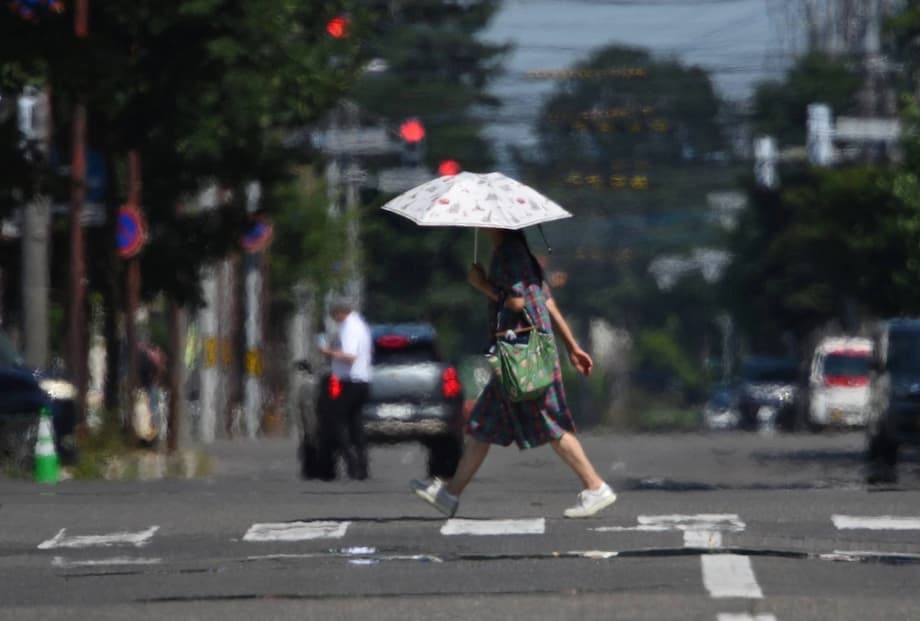Kushiro’s Sudden Heatwave: A City Unprepared for Scorching Temperatures
Kushiro, a city on the eastern coast of Hokkaido, Japan’s northernmost island, has long been celebrated for its cool, misty summers. Traditionally, residents and visitors alike have enjoyed mild weather, with average summer temperatures hovering around 20 degrees Celsius (68°F). Air conditioning was once considered unnecessary, and many homes and businesses never bothered to install it. But in the summer of 2023, Kushiro experienced a dramatic and unprecedented shift: a record-breaking heatwave sent temperatures soaring above 30 degrees Celsius (86°F) for three consecutive days, leaving the city scrambling to adapt.
- Kushiro’s Sudden Heatwave: A City Unprepared for Scorching Temperatures
- Why Is Kushiro Heating Up? The Science Behind the Heatwave
- How Residents Are Coping: Adaptation and Challenges
- Japan’s Broader Climate Crisis: Migration, Adaptation, and Economic Impact
- Looking Ahead: Preparing for a Hotter Future in Hokkaido
- In Summary
The sudden spike in temperature caught both residents and retailers off guard. At a local home improvement store, the entire stock of 130 fans and 70 air conditioners and spot coolers vanished in just four days. Even after placing emergency orders for more fans, the new shipments sold out almost immediately. With no cooling products left to offer, the store was forced to restock its shelves with heating equipment—an ironic twist in a city known for its chilly climate.
Why Is Kushiro Heating Up? The Science Behind the Heatwave
To understand why Kushiro, once considered a haven from Japan’s sweltering summers, is now facing record heat, it’s important to look at broader climate trends. Japan as a whole has been experiencing hotter and longer summers, with 2023 marking the hottest summer since records began in 1898. According to meteorological data, the average temperature across Japan was 1.76°C higher than the 30-year average, and more than 100 monitoring stations set new temperature records between July and August.
Several factors contributed to this extreme weather:
- High-pressure systems trapped hot air over the Japanese archipelago, preventing cooler air from moving in.
- Typhoons and record sea surface temperatures in the surrounding oceans added to the heat, disrupting normal weather patterns.
- Global warming is intensifying these effects, making heatwaves more frequent and severe even in regions previously considered immune.
Scientific studies, such as those analyzing storm tracks and precipitation anomalies in Hokkaido, confirm that weather patterns are becoming more unpredictable. Kushiro, which once benefited from cool ocean breezes and stable summer weather, is now vulnerable to the same heat extremes affecting the rest of Japan.
Changing Perceptions: From Cool Refuge to Heatwave Hotspot
For years, Kushiro was seen as a rare part of Japan where air conditioning was unnecessary. Online forums and travel guides often recommended the city to those seeking relief from the oppressive heat of Tokyo or Osaka. One Reddit user remarked, “Maybe the only place in Hokkaido I know of that doesn’t need AC is Kushiro.” This reputation made the recent heatwave all the more shocking for residents and visitors alike.
Assistant store manager Koiwa Masahiro expressed his concern, noting that August could bring even more extreme temperatures. “We want to offer air conditioners and other products to customers in need as soon as possible,” he said, highlighting the urgent demand for cooling solutions in a city unaccustomed to such needs.
How Residents Are Coping: Adaptation and Challenges
The sudden shortage of fans and air conditioners left many Kushiro residents struggling to stay cool. In a city where most homes and businesses lack built-in air conditioning, people had to improvise. Some sought refuge in public spaces like shopping centers or libraries, while others relied on traditional methods such as cold showers, wet towels, and keeping windows open at night. However, these measures offered limited relief during the hottest days.
Vulnerable populations, including the elderly and those with chronic health conditions, faced the greatest risks. Health officials in Japan and around the world warn that heatwaves can be deadly, especially for those without access to air conditioning. Symptoms of heat exhaustion—such as heavy sweating, fatigue, dizziness, and nausea—can quickly escalate to heatstroke, a life-threatening condition. The Centers for Disease Control and Prevention (CDC) recommends moving affected individuals to air-conditioned spaces, offering water, and seeking medical help if symptoms worsen.
Communities in other countries, such as the United States, have responded to similar crises by opening cooling centers and distributing fans to at-risk residents. In Kushiro, the rapid sell-out of cooling products underscored the need for better preparedness and public health measures as climate change continues to reshape local weather patterns.
Japan’s Broader Climate Crisis: Migration, Adaptation, and Economic Impact
Kushiro’s experience is part of a larger trend across Japan. As summers grow hotter, more people are seeking refuge in cooler regions. Cities like Katsuura and Kitaibaraki, known for their temperate climates, have seen a surge in relocation inquiries. The Furusato Kaiki Shien Center, which helps people move from urban to rural areas, received over 52,000 inquiries in 2022 alone. While some are drawn by the promise of cooler summers, others are motivated by the rising cost of electricity and the health risks associated with extreme heat.
However, even these “cool refuges” are not immune to climate change. Residents in Katsuura and similar cities report that summers are getting warmer, and the need for air conditioning is increasing. This shift has significant economic implications:
- Increased demand for air conditioners is straining supply chains, leading to shortages in unexpected places like Kushiro.
- Rising electricity costs make it harder for vulnerable populations to afford adequate cooling, increasing the risk of heat-related illnesses.
- Local businesses must adapt by stocking products that match the new climate reality, even if it means rethinking their traditional inventory.
Urban convenience and job opportunities still attract many people to major cities, but the growing threat of heatwaves is prompting some to reconsider where they live and how they prepare for summer.
Lessons from Abroad: How Other Countries Handle Heatwaves
The challenges faced by Kushiro are not unique. In the United States, Europe, and other parts of Asia, record heatwaves have forced communities to rethink their approach to summer safety. Public health campaigns emphasize the importance of staying hydrated, wearing lightweight clothing, and limiting outdoor activities during peak heat. Some cities have established cooling centers in schools, libraries, and community centers to provide relief for those without air conditioning.
Businesses are also adapting by adjusting work hours to avoid the hottest parts of the day and providing fans or portable air conditioners to employees. These strategies could serve as models for Kushiro and other Japanese cities as they confront the realities of a warming climate.
Looking Ahead: Preparing for a Hotter Future in Hokkaido
Kushiro’s recent heatwave is a wake-up call for the city and the broader region of Hokkaido. As climate change accelerates, even the coolest parts of Japan can no longer take mild summers for granted. Local governments, businesses, and residents must work together to adapt to this new normal.
Some key steps for the future include:
- Investing in infrastructure to ensure that homes, schools, and public buildings are equipped with adequate cooling systems.
- Developing emergency response plans to protect vulnerable populations during extreme heat events.
- Promoting energy efficiency and renewable energy sources to manage the increased demand for electricity.
- Educating the public about the risks of heatwaves and the importance of preparedness.
As Kushiro’s experience shows, climate change is not a distant threat—it is already reshaping daily life in places once considered safe from extreme weather. By learning from this summer’s challenges, the city can build resilience and ensure the well-being of its residents in the years to come.
In Summary
- Kushiro, Hokkaido, experienced a record-breaking heatwave, with temperatures exceeding 30°C for three days.
- The city’s home improvement stores quickly sold out of fans and air conditioners, highlighting a lack of preparedness for extreme heat.
- Traditionally known for its cool summers, Kushiro is now facing the realities of climate change and rising temperatures.
- Residents struggled to cope without air conditioning, and vulnerable populations faced increased health risks.
- The situation in Kushiro reflects broader trends across Japan and the world, as heatwaves become more frequent and severe.
- Adapting to a hotter future will require investment in infrastructure, public health measures, and community education.












